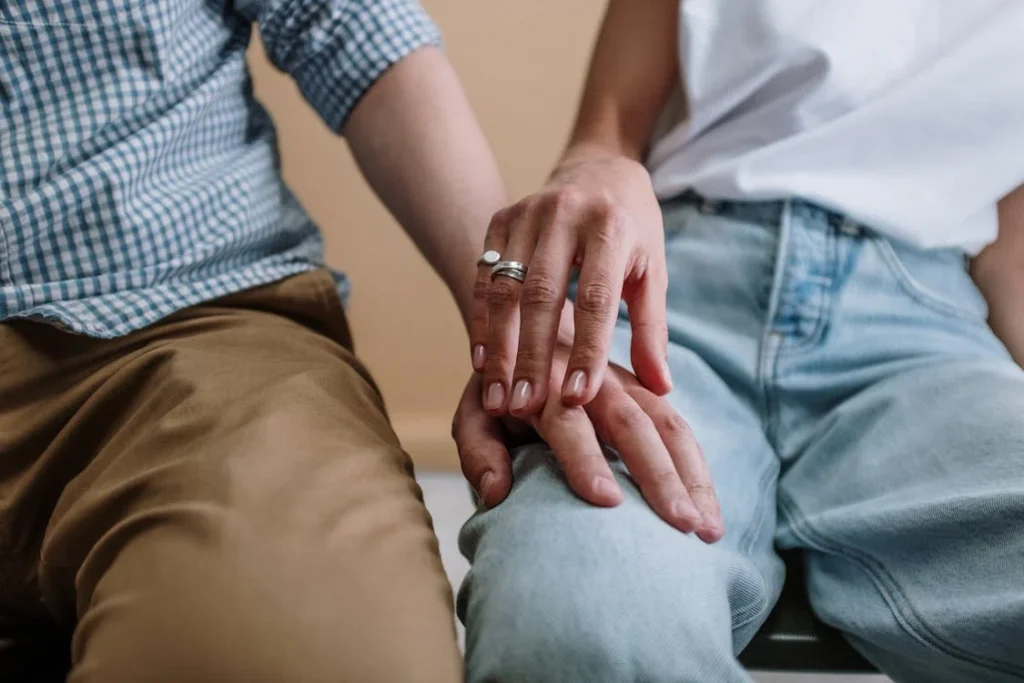Recovering after an amputation is a journey that goes beyond medical treatment. The home environment plays a crucial role in how smoothly and safely an individual regains independence. Many everyday activities that once felt effortless—walking from room to room, using the bathroom, or reaching for objects—can become difficult without the right setup.
A home should feel comfortable, accessible, and safe, not like an obstacle course. Making thoughtful adjustments before returning home can reduce the risk of falls, ease mobility, and create a supportive space for rehabilitation. Small changes, such as rearranging furniture, installing handrails, or adjusting the height of essential items, can make daily life much easier.
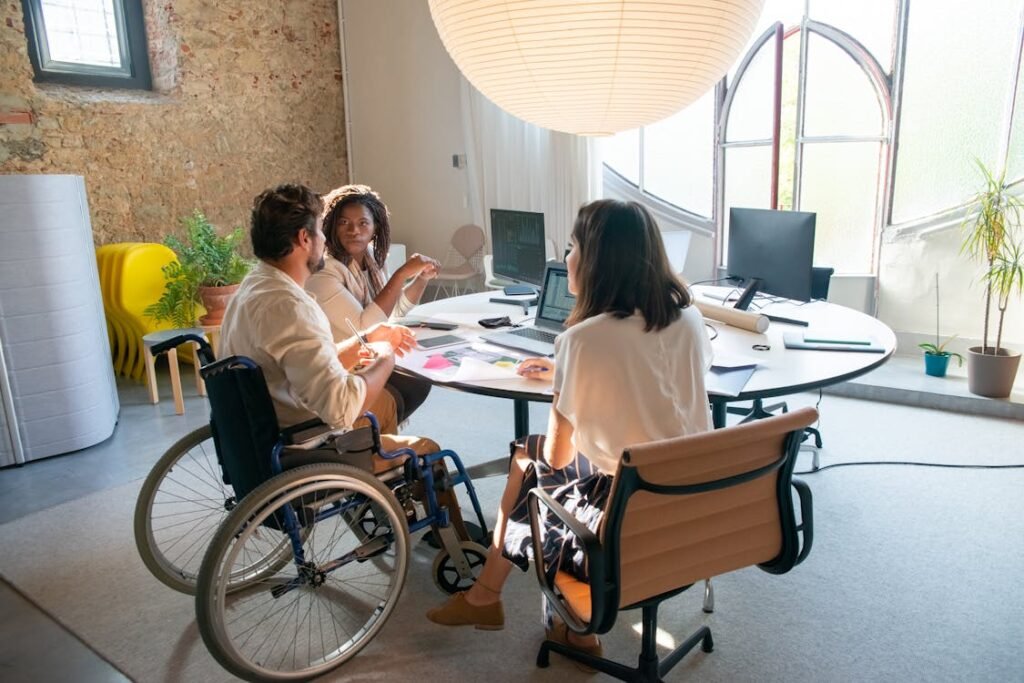
Creating a Safe and Accessible Living Space
After an amputation, the home must be rearranged and adapted to make movement as easy and safe as possible.
Many everyday tasks that once felt simple—such as getting out of bed, walking to the kitchen, or using the bathroom—can suddenly feel difficult or even dangerous. The key is to eliminate obstacles, improve accessibility, and ensure stability in every area of the home.
Clearing Pathways and Reducing Hazards
One of the first steps in making a home safer is to remove anything that could cause trips or falls.
Loose rugs, cluttered walkways, and furniture placed too closely together can make navigation difficult, especially for someone using crutches, a wheelchair, or a prosthetic limb for the first time.
A clear, wide path between rooms allows for smooth movement without the risk of getting stuck or losing balance.
Flooring also plays a big role in stability and safety. Slippery surfaces such as tile or polished wood can increase the risk of falls, particularly in areas like the kitchen or bathroom.
Using non-slip mats or textured flooring helps provide better traction. Thresholds between rooms should be as low as possible to allow seamless movement without unnecessary strain.
Making Everyday Items Easy to Reach
One of the most frustrating challenges after an amputation is struggling to reach essential objects. Items that were once stored on high shelves or in low cabinets may no longer be easily accessible.
Adjusting the height of frequently used items—such as kitchen utensils, toiletries, and personal belongings—can reduce strain and improve independence.
In the kitchen, placing commonly used dishes, appliances, and food items at waist level prevents the need to bend or stretch too much.
In the bedroom, a bedside table within arm’s reach provides easy access to important things like a phone, medication, or a water bottle. Making these small adjustments in advance reduces frustration and supports a smoother recovery.
Ensuring Stability in Key Areas
Many parts of the home require extra support to help with balance and mobility. Handrails, grab bars, and sturdy furniture provide anchor points that allow for safer movement, particularly for those adjusting to using a prosthetic limb or a mobility aid.
The bathroom is one of the most important areas to modify, as wet surfaces increase the risk of slipping.
Installing grab bars near the toilet and shower, using a shower chair, and replacing traditional bathmats with non-slip versions can make daily hygiene routines safer and more manageable.
For those using a wheelchair, ensuring that doorways are wide enough for smooth entry and exit is also essential. Even small changes, such as rearranging furniture to allow for more open space, can significantly improve mobility throughout the home.
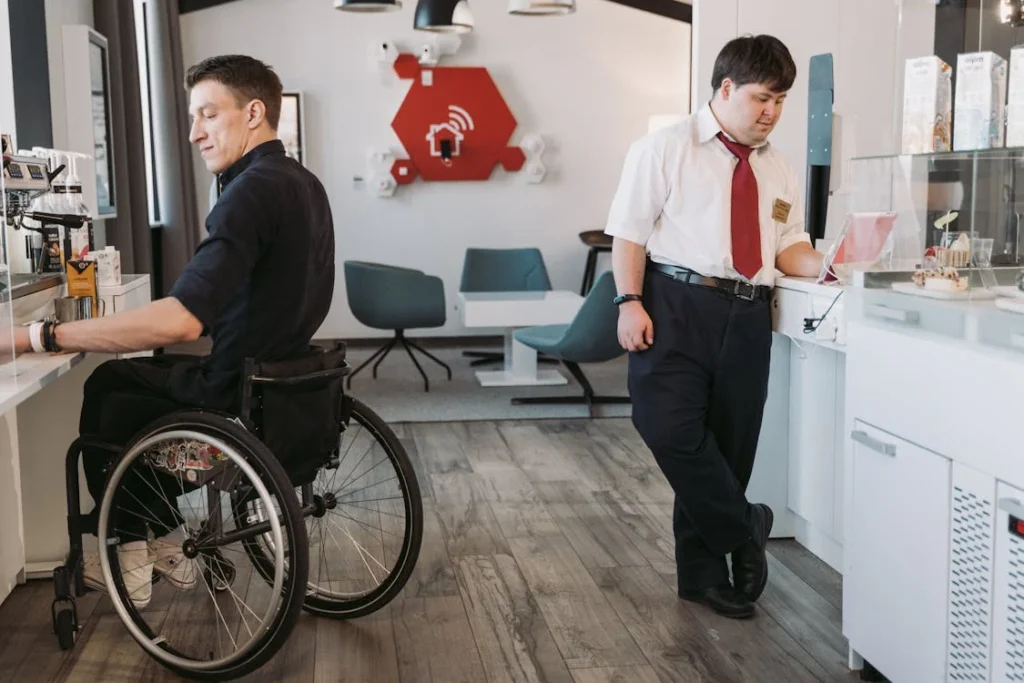
Adapting Each Room for Comfort and Mobility
Every room in the home should be designed to support smooth, stress-free movement. Whether it’s navigating the bedroom at night, preparing meals in the kitchen, or using the bathroom safely, thoughtful modifications can make a significant difference in daily life.
Transforming the Bedroom into a Recovery-Friendly Space
The bedroom should be a place of comfort, ease, and security. After an amputation, getting in and out of bed can be challenging, especially in the early stages of recovery.
A bed at the right height—neither too low nor too high—allows for easy transfers, whether using crutches, a wheelchair, or a prosthetic limb.
Having a sturdy bedside table within arm’s reach ensures that essential items, such as medication, water, and a phone, are always accessible.
If mobility is limited, a bedside grab bar or an adjustable bed frame can provide additional support when shifting positions or sitting up. Keeping the floor space clear of cords, rugs, or clutter helps prevent unnecessary trips or slips during the night.
Making the Bathroom Safer and More Functional
Bathrooms present some of the biggest challenges due to slippery surfaces, limited space, and the need for stability during activities like showering and using the toilet.
Installing grab bars near the toilet and in the shower provides a secure grip for balance and movement. A raised toilet seat reduces strain on the lower body, making it easier to sit and stand.
For bathing, a walk-in shower is preferable to a bathtub, as stepping over a tub wall can be risky. If a shower chair is needed, ensuring that the space allows for comfortable movement and reachability of soap, towels, and water controls is important.
Handheld showerheads also make washing easier, especially for those with limited lower-body mobility.
Adjusting the Kitchen for Accessibility
The kitchen is the heart of the home, and after an amputation, it should be adapted for ease of movement and safety. Many daily activities, such as cooking, washing dishes, and reaching for ingredients, require good balance and stability.
Lowering commonly used shelves, placing frequently used utensils in accessible drawers, and using lightweight pots and pans can make meal preparation easier.
For those using wheelchairs, ensuring there is enough space between counters and tables allows for smooth navigation.
If standing for long periods is tiring, a sturdy chair or stool can provide a comfortable resting option while cooking. Non-slip floor mats and good lighting reduce the risk of slipping or misjudging distances.
Creating a Safer Living Room Environment
The living room should be designed for relaxation and easy movement. Sofas and chairs should be stable and at a comfortable height to allow for smooth transitions from sitting to standing. If the seating is too low or too soft, getting up can require extra effort and strain.
Ensuring that light switches and remote controls are within easy reach prevents unnecessary stretching or awkward movements. Keeping pathways clear of rugs, cables, and small furniture pieces allows for uninterrupted movement between rooms, reducing the risk of falls.
By making these room-by-room adjustments, a home can become a safe, functional, and comfortable space that supports post-amputation recovery and promotes independence and confidence.

Improving Mobility and Independence at Home
Creating a safe and accessible home is just one part of post-amputation recovery. Being able to move freely and perform daily tasks independently is just as important.
The right modifications can help restore confidence, reduce fatigue, and prevent accidents, making the transition to everyday life much smoother.
Using Assistive Devices for Better Mobility
Many amputees rely on assistive devices such as crutches, walkers, wheelchairs, or prosthetic limbs as they regain mobility. The home environment should be adjusted to accommodate these aids, ensuring there is enough space for easy navigation.
Wide doorways, open floor plans, and sturdy handrails along hallways or staircases provide the necessary support for safe and confident movement.
For those using a wheelchair, lowered countertops, accessible switches, and ramps instead of steps can make all the difference.
If the home has multiple floors, considering a stairlift or arranging daily activities on one level can prevent unnecessary strain. These small but significant changes reduce physical effort and make everyday tasks feel more manageable.
Setting Up a Rehabilitation and Exercise Space
Rehabilitation exercises are an essential part of recovery, helping to strengthen muscles, improve balance, and adapt to a prosthetic limb. Having a dedicated space at home for stretching and movement can make it easier to stay consistent with therapy.
A small area with a stable chair, a firm mat, and clear floor space allows for safe and effective rehabilitation exercises. Mirrors can be useful for checking posture and alignment while practicing weight shifts or gait training.
If possible, placing this area near a sturdy countertop or grab bar provides extra support when performing standing exercises.
For amputees working on improving upper-body strength, keeping resistance bands or light weights within reach encourages regular activity.
Staying engaged with movement, even in small ways, helps maintain muscle tone and mobility, reducing the risk of stiffness and discomfort.
Making Daily Activities Easier and Less Strenuous
Post-amputation recovery can be physically exhausting, especially in the early stages. Modifying how daily tasks are performed can help conserve energy and prevent unnecessary strain.
Sitting while dressing, using long-handled tools for reaching, and placing frequently used items at waist level are simple adjustments that reduce effort and increase comfort.
For tasks that require standing, such as cooking or washing dishes, having a sturdy chair nearby allows for quick breaks when needed.
Small additions like motion-sensor lights for better visibility at night, lever-style door handles for easier grip, and smart home features for hands-free control can also make life more convenient.
Staying Connected and Supported at Home
Recovery is not just about physical adjustments—emotional well-being is just as important. Many amputees experience moments of frustration, isolation, or uncertainty, especially when they are spending more time at home.
Staying connected with family, friends, or a support group can provide motivation and encouragement throughout the healing process.
Having emergency contact options easily accessible, such as a cordless phone or voice-activated assistant, ensures that help is always within reach.
If mobility is limited, arranging for home healthcare visits or online check-ins with a rehabilitation specialist can provide extra support. A well-prepared home should not only be safe but also feel welcoming, comfortable, and emotionally supportive.
By focusing on both physical adjustments and daily habits, amputees can create a home environment that promotes strength, independence, and long-term well-being.
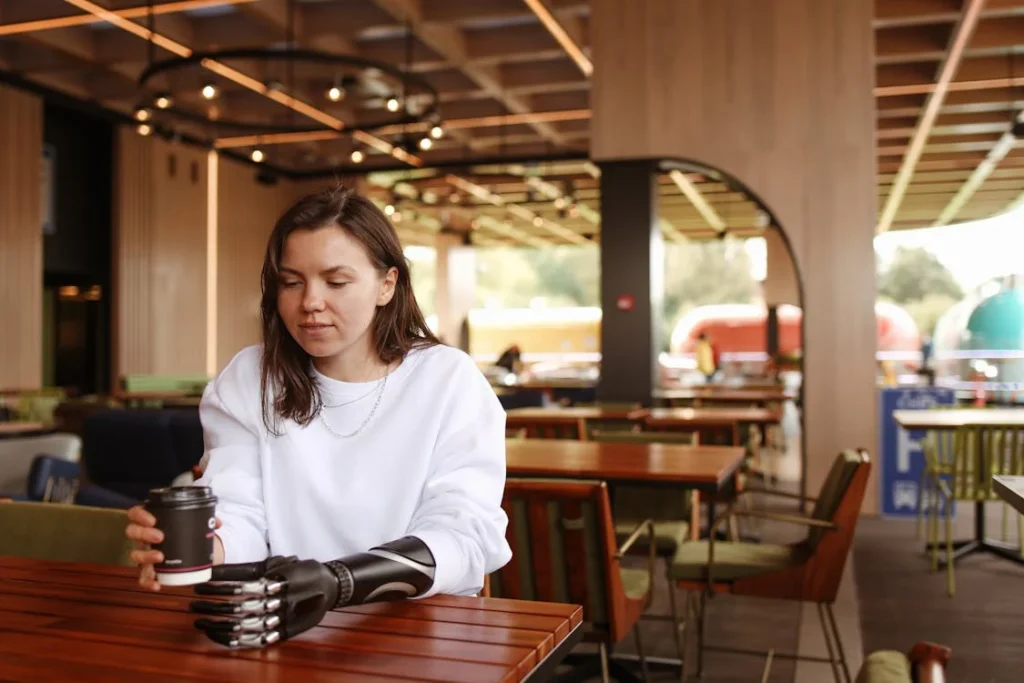
Emotional and Psychological Adjustment to Home Life After Amputation
Recovering from an amputation is not just about physical mobility and safety—it is also about adapting mentally and emotionally to a new way of living. The home environment plays a significant role in this process.
A well-prepared home should not only provide accessibility and support but also create a sense of comfort, stability, and emotional security.
Adjusting to a New Normal
Coming home after an amputation can bring a mix of emotions—relief, frustration, uncertainty, and sometimes even grief.
Many amputees struggle with the feeling that everything is different, especially if they require mobility aids or need assistance with daily tasks. It is important to give the mind time to adjust, just as the body is learning to adapt to new movements.
Keeping a positive and patient mindset is essential during this transition. Instead of focusing on limitations, it helps to shift attention to progress and small victories.
Whether it’s standing up more easily, moving through a room without assistance, or adjusting to a prosthetic limb, every step forward is a sign of recovery.
Creating a Relaxing and Encouraging Home Environment
The home should be a place that promotes peace and motivation, not frustration. A clutter-free and well-lit space can help create a sense of calm and control.
Adding personal touches—such as favorite photos, comfortable seating, or soothing colors—can make the home feel like a safe and welcoming space for healing.
Surrounding oneself with encouraging reminders can also be helpful. Some people find motivation in placing recovery goals, inspirational quotes, or rehabilitation schedules in visible areas as a daily encouragement to keep pushing forward.
Listening to music, engaging in hobbies, or practicing mindfulness can also help reduce stress and anxiety during the healing process.
Dealing with Moments of Frustration
It is completely normal to experience moments of frustration or sadness after an amputation. Simple tasks may take longer, and adapting to prosthetics or mobility aids can feel overwhelming.
On tough days, it’s important to recognize that progress takes time and that setbacks are part of the journey.
Having a strong support system—whether it’s family, friends, or a peer support group—can make a huge difference. Talking to others who have gone through similar experiences can provide reassurance, motivation, and practical advice on overcoming daily challenges.
If emotional struggles become overwhelming, seeking guidance from a counselor or mental health professional can provide valuable tools for coping.
Regaining Confidence and Independence
Confidence grows with each successful movement, each completed task, and each day of progress. As balance improves and the body adapts, amputees begin to feel more in control of their mobility and surroundings.
Being able to move around the home without fear or excessive effort creates a renewed sense of freedom and independence.
Setting realistic daily goals—such as preparing a meal, walking to another room without assistance, or practicing rehabilitation exercises—can help build momentum and motivation.
The more an individual challenges themselves in a safe and controlled environment, the more confident they become in their abilities.
Embracing Life Beyond the Home
The ultimate goal of preparing the home for post-amputation recovery is to help individuals feel strong enough to engage fully in life again.
Once mobility and confidence improve at home, it becomes easier to step outside, visit loved ones, return to work, or engage in community activities.
By making the home a place of support, encouragement, and ease, amputees can focus on not just recovery but also rediscovering joy, independence, and the ability to live fully once again.
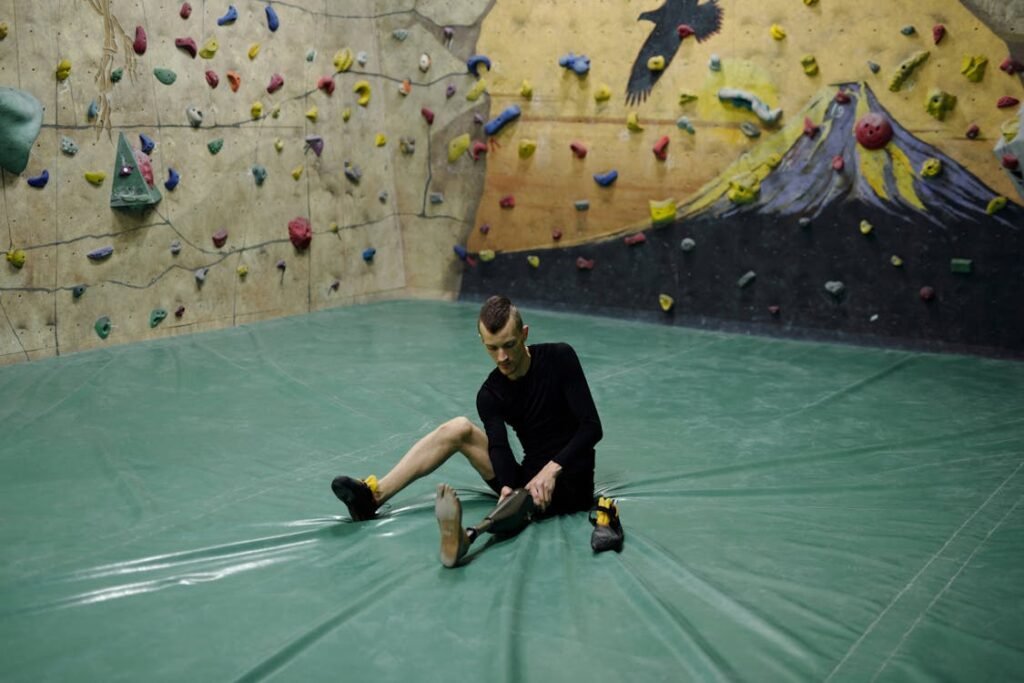
The Role of Technology in Home Adaptation for Amputees
Technology has transformed how amputees navigate their homes, making it easier to regain independence, control, and safety.
Smart home devices, voice-activated assistants, and automated features can significantly reduce physical strain, allowing for more freedom and convenience in daily life.
Smart Home Automation for Effortless Control
For many amputees, simple tasks like turning on lights, adjusting room temperature, or opening doors can become inconvenient if mobility is limited.
Smart home technology allows these functions to be controlled through voice commands, remote controls, or mobile apps, reducing the need for unnecessary movement.
Motion-activated lights are particularly useful, eliminating the need to search for switches in the dark. Smart door locks and voice-controlled appliances further enhance accessibility, allowing individuals to operate home features with minimal effort.
These adjustments not only improve comfort but also enhance safety, reducing the risk of accidents caused by struggling with everyday tasks.
Advanced Prosthetic Integration with Home Devices
With the rise of bionic prosthetics and AI-driven assistive devices, some modern prosthetic limbs can now be synchronized with smart home systems.
This allows for seamless interaction between an amputee and their environment, creating a more intuitive and effortless living experience.
For example, some high-tech prosthetics can be programmed to send signals to smart thermostats, televisions, or security systems, allowing amputees to adjust their home settings without needing extra physical movement.
While still a developing field, the future of prosthetic-home integration promises even greater autonomy for individuals adapting to life after amputation.
Emergency Response Systems for Added Security
Having quick access to emergency assistance is crucial, especially in the early stages of recovery. Falls, balance issues, or sudden medical needs can arise unexpectedly.
Wearable emergency buttons, smart speakers with built-in emergency calling, and fall-detection sensors can provide peace of mind by ensuring that help is always within reach.
By integrating technology into daily life, amputees can reduce stress, minimize physical effort, and create a safer, more efficient home environment that supports their rehabilitation journey.

Nutrition and Wellness for Faster Post-Amputation Recovery at Home
While modifying the home environment is crucial for mobility, what happens inside the body is just as important. Proper nutrition plays a major role in healing, energy levels, and muscle strength, all of which contribute to a smoother rehabilitation process.
A well-planned diet can speed up tissue repair, reduce inflammation, and improve stamina, making it easier to regain strength and adapt to new movement patterns.
Eating for Faster Healing
After an amputation, the body undergoes significant physiological changes, and proper nutrition helps support recovery. Foods rich in protein, vitamins, and healthy fats are essential for rebuilding muscle, strengthening bones, and boosting immunity.
Lean meats, fish, nuts, legumes, and dairy products provide the necessary protein for muscle regeneration, while fruits and vegetables supply key vitamins that reduce inflammation and promote wound healing.
Staying hydrated is also critical, as dehydration can lead to fatigue, muscle cramps, and reduced circulation, all of which can slow down progress.
Having easy access to water dispensers or pre-prepared healthy meals in the kitchen ensures that nutrition remains a priority without adding physical strain.
Managing Weight to Improve Mobility
Maintaining a healthy weight is particularly important for lower-limb amputees using prosthetics. Excess weight puts additional strain on the remaining limb and prosthetic device, making movement more difficult and increasing the risk of joint pain.
A balanced diet combined with moderate activity helps keep body weight in check while ensuring muscle strength and stamina continue to improve.
Reducing Inflammation and Supporting Joint Health
Inflammation can slow down recovery and cause discomfort in the residual limb, back, and joints.
Anti-inflammatory foods such as leafy greens, turmeric, ginger, and omega-3-rich fish can help reduce swelling and pain, promoting greater comfort during movement.
Avoiding processed foods, excess sugar, and alcohol can further support long-term health and reduce unnecessary complications.
By combining home accessibility with proper nutrition, amputees can create an ideal environment for both physical and internal recovery, ensuring a smoother, more effective rehabilitation process.
The Importance of Sleep and Rest in Home-Based Recovery
Recovering from an amputation requires a balance of activity and rest. While movement and rehabilitation exercises are essential, quality sleep and relaxation are just as important for healing, mental well-being, and long-term strength.
Creating a Sleep-Friendly Environment
A comfortable and distraction-free bedroom setup is essential for quality sleep. The bed should be firm enough to provide good spinal alignment, with easy access to pillows and blankets for additional support and comfort.
If residual limb pain or phantom limb sensations affect sleep, adjusting the position of the leg or arm with soft padding can help minimize discomfort.
Reducing exposure to screens, bright lights, and noise before bedtime also promotes deeper, more restful sleep. If difficulty falling asleep persists, practicing relaxation techniques like deep breathing or listening to calming music can improve sleep quality.
Balancing Activity and Rest
During rehabilitation, there is often a fine line between pushing the body and allowing it time to recover. While staying active is important, overexertion can lead to exhaustion and setbacks.
Establishing a structured daily routine that includes periods of rest between activities helps prevent fatigue and promotes muscle recovery.
By prioritizing both movement and relaxation, amputees can improve endurance, maintain strength, and stay mentally refreshed, ensuring a steady and sustainable recovery process at home.

How Family and Caregivers Can Support Home Rehabilitation
For many amputees, adjusting to home life after surgery is easier when family members or caregivers are actively involved.
A strong support system can help with practical tasks, emotional encouragement, and ensuring safety, creating a positive and stress-free home environment.
Providing Assistance Without Reducing Independence
One of the biggest concerns for amputees is the loss of independence. While support is valuable, it is important that caregivers allow the individual to do as much as they can on their own.
Instead of taking over tasks completely, offering gentle guidance and assistance when necessary helps amputees regain confidence in their abilities.
Encouraging small achievements—such as dressing independently, preparing a simple meal, or walking a short distance—builds self-reliance and motivation.
Recognizing and celebrating progress, no matter how small, can make a huge difference in an amputee’s mindset.
Creating a Routine That Encourages Movement and Engagement
A structured daily routine that includes exercise, relaxation, and social interaction helps keep amputees mentally and physically engaged.
Setting aside time for rehabilitation exercises, outdoor walks, or engaging hobbies prevents boredom and maintains a sense of purpose and normalcy.
If an amputee is feeling isolated, arranging for friends, family members, or online support groups to check in regularly can provide emotional encouragement and reassurance.
Having an active support network ensures that no one feels like they are facing recovery alone.
By combining physical, emotional, and practical support, caregivers can create a home environment that fosters healing, resilience, and long-term independence.
Conclusion
Recovering from an amputation is not just about healing the body—it is about adapting to a new way of life with confidence and independence. The home plays a critical role in this process, serving as both a place of comfort and a foundation for rehabilitation. By making thoughtful adjustments, ensuring accessibility, and incorporating assistive technology, amputees can regain mobility, safety, and control over their daily routines.
Preparing the home is about more than just removing obstacles—it’s about creating an environment that supports movement, emotional well-being, and long-term success. From adjusting furniture placement to integrating smart home devices, every small change contributes to a smoother, stress-free recovery experience. When combined with proper nutrition, rest, and emotional support, these home modifications help amputees not just recover, but thrive.
At Robobionics, we believe in empowering individuals to live independently and confidently after amputation. Our advanced prosthetics, such as Grippy™, are designed to enhance mobility and provide a natural, comfortable experience for users. But recovery isn’t just about prosthetics—it’s about creating a home and lifestyle that supports your journey every step of the way.



